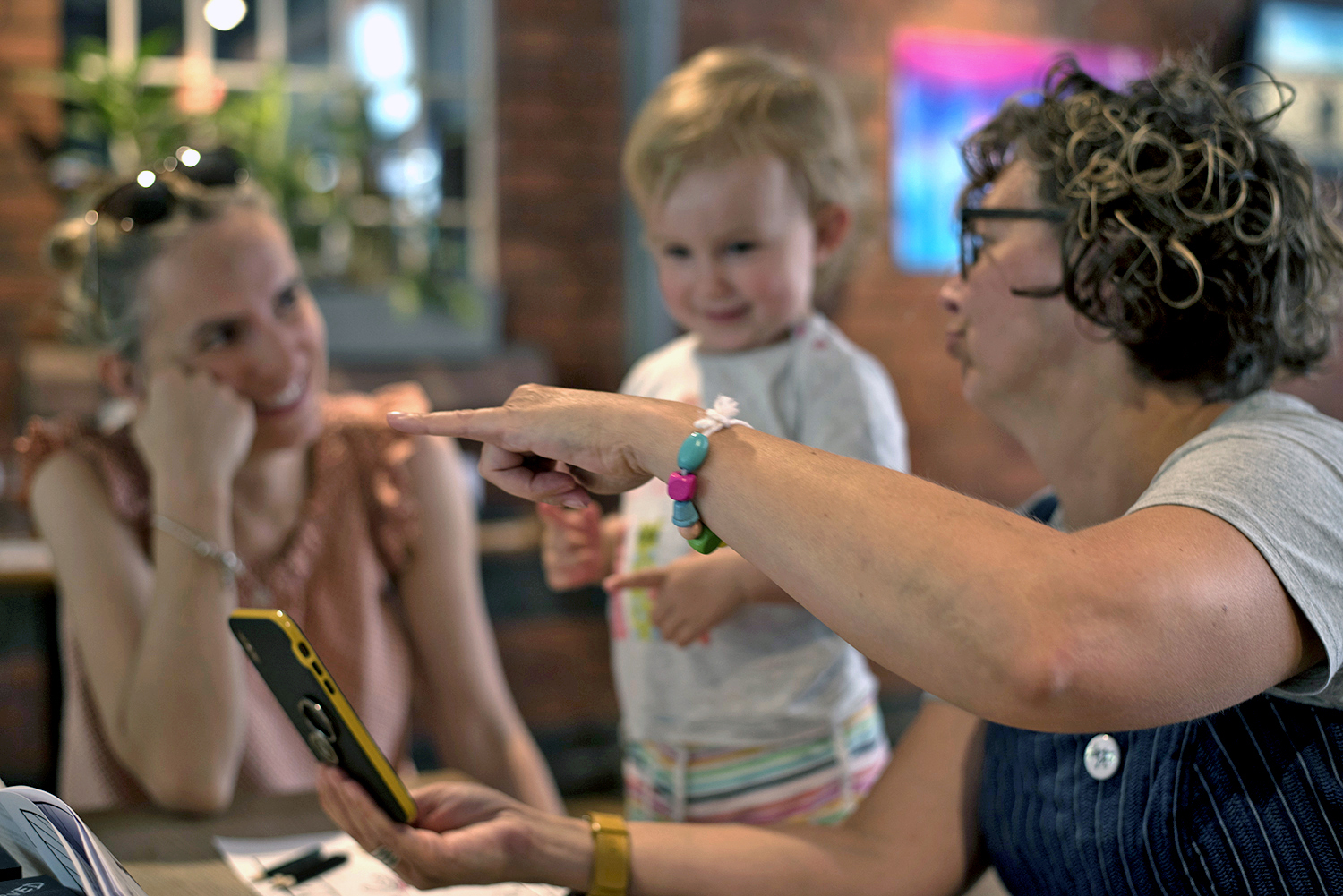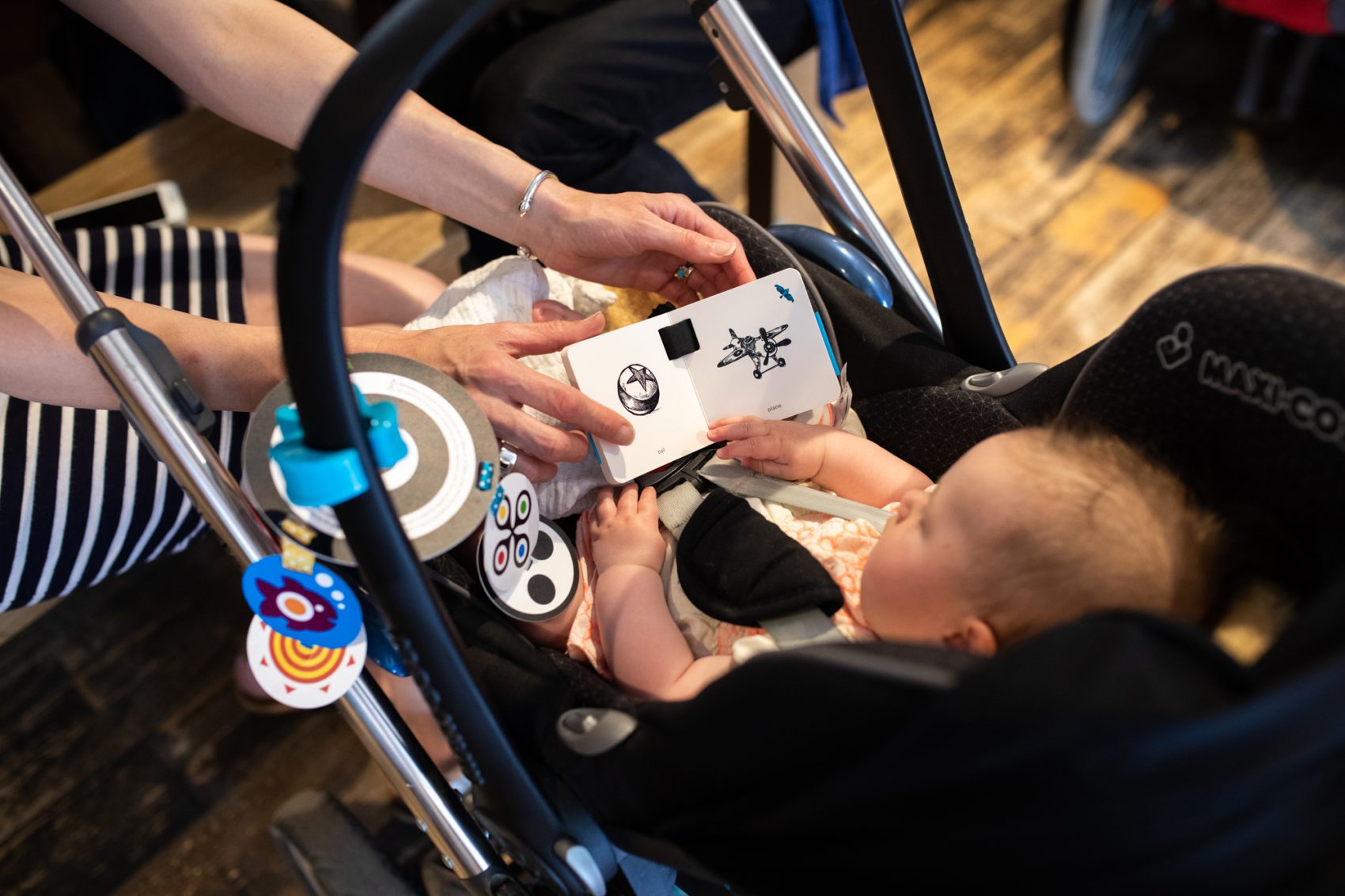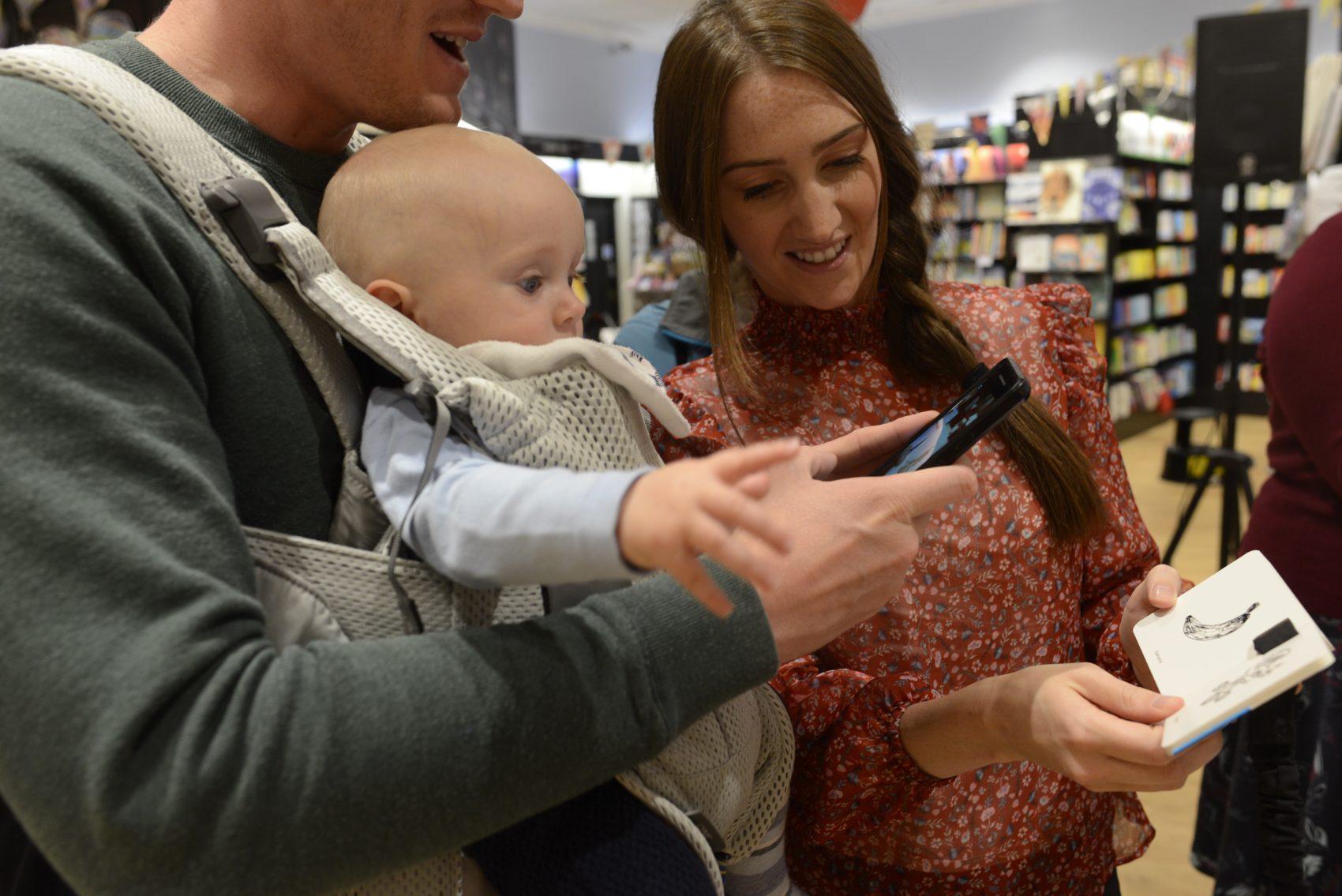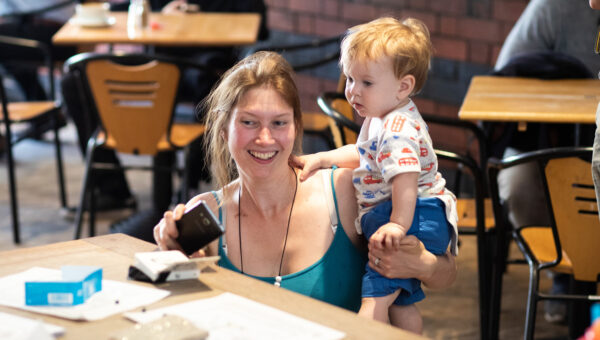Baby BSL and British Sign Language
A Brief Guide from the Deaf Studies Trust
British Sign Language (BSL) is a complete language developed in the UK. It is used daily, and like all languages, it constantly changes and evolves. BSL is effective in the earliest years of a child’s life, because it is visual and because it develops naturally. When coupled with augmented reality, sign language can be an effective tool for language enrichment for both deaf and hearing children. Perhaps most significantly, sign language can be a vital support for parents interacting with children, particularly at a time when spoken language is just emerging.
What is sign language?
BSL is the language used by deaf people in the UK.
It is a language of the hands, body and face, and uses space to convey meaning. It is a highly visual language, developed over hundreds of years to meet the needs of deaf people.
Is it like English but using hands?
No. BSL has a completely different structure to English, both the grammar and the way the signs are constructed is different.
Is it more like gesture?
No. If BSL were just gesture, then everyone would understand it easily. Most people do not understand deaf people when they are using BSL.
Isn’t there a limit to what can be expressed using only your hands?
There is no limit to the expression of meaning. BSL is just as rich and complex a language as English. New signs are being created all the time, and we haven’t been able to count all the BSL signs yet.

Is BSL based on pictures? Sometimes I think I can understand signs.
BSL is a visual language and has a much stronger link to the visual world than English. But there are many signs in BSL which have no relation to the way things look. Signs represent objects as they are seen, and events as they are experienced. We call this ‘iconic’ language. English uses a lot of onomatopoeia (sound pictures) in its words, for example, thump, crash, bang.
Is finger spelling sign language?
Deaf people use finger spelling. It’s used to represent the letters of written English and is at least 300 years old. Deaf people use it to spell the names of people or places. Bristol is B-L. Finger spelling is also used when English uses initials, like B-B-C or N-H-S.
Is sign language the same all over the world?
Yes and no. There are lots of different sign languages. These languages have more in common with each other than different spoken languages do, but each has its own vocabulary and expression. As a rule, the grammar of different sign languages is similar, but the vocabularies are different. As with spoken languages, sign languages evolve with the requirements of their cultures. For example, Chinese Sign Language has very different concepts and signs to BSL.
Are there families of sign language?
Yes. Sign language has families of language. These are different from the families of spoken languages. American English and British English, for example, are not only in the same family, they are regional dialects of the same language. In sign language, American Sign Language and French Sign Language are in one family, and British Sign Language and Australian Sign Language are in another.

Do all deaf people use sign language?
Yes and no. The current definition of a deaf person is someone who uses sign language, so yes. But the way people learn sign language is different to the way hearing people learn spoken language. This is because 90% of deaf children are born into hearing families, most of whom have no prior experience of sign language themselves. This means that many deaf children do not experience sign language until they are four or five years old, even later in some cases. This is changing as more people become aware of sign language. But there are many deaf people, or people with a hearing loss, who have not learnt sign language.
Who are the main users of BSL right now?
The main users of sign language are people in the deaf community, children whose parents are Deaf, and people who went to a deaf school. Elderly people or people who experience sudden hearing loss rarely use sign language.
People whose hearing loss is not as extensive, for example partially hearing or hard-of-hearing people are also unlikely to use sign language. So no, not all deaf people use sign language.
Is BSL a fixed language?
No. Historical descriptions allow us to compare BSL today with BSL 50–100 years ago. Some signs have changed position in space, for example, ‘police’ has moved from the upper arm to the wrist, and ‘perhaps’ has moved from near the head to in front of the body. And some signs have changed from two- to one-handed, such as ‘fish’, ‘live’ and ‘school’.
Is BSL the same all over the UK?
No. As with spoken English, there are regional variations in BSL. Single signs are different, but the structure remains the same, so it should be possible BSL users to understand regional signs.
How many people use sign language?
This is not an easy question to answer. In the 2011 Census, where figures apply only to the population aged 3+, around 18,000 people registered BSL as their main language. BSL users are more likely to be monolingual, with no spoken English. But deaf people who are bilingual in BSL and English tend to choose English as their main language (92%), as it has a higher status.
Based on an analysis of deaf school records, the number of people using BSL and English is nearer 40,000, but precise figures do not exist.

Why is British Sign Language significant?
BSL is culturally and structurally different from spoken languages as it uses a different modality: vision, rather than hearing.
BSL is an indigenous language, developed in and native to the UK. It can be said to be the fourth most common indigenous language after English, Welsh and Gaelic, and unique in that the majority of Welsh and Gaelic speakers are bilingual in English.
Why has BSL not been formally recognised?
Welsh and Gaelic have access to considerable cultural status and funding, such as TV channels, official documents, bilingual websites, and cultural events. Whereas BSL is associated with disability and linked to deficiency. Despite linguists ‘proving’ the linguistic status of BSL, they have yet to persuade the British government to accept it legally.
Some exceptions do exist. Marriages and court/legal processes can be conducted in BSL (with interpreters), and 5% of TV broadcasts must include BSL. But the cultural funding available for Welsh or Gaelic is not available for BSL. The introduction of the BSL Act in Scotland means this is changing. The implications of this Act will be worked out over the next five years.

How do people learn BSL?
Signature, an educational body which sets the route to becoming a BSL interpreter, has a national tuition and examination system for BSL with Levels 1–6. Thousands of people take these BSL courses. They may be relatives of a deaf person, have a work colleague, be in pursuit of a career in BSL, or just interested in the language itself.
How do deaf children learn BSL?
Deaf children with deaf parents learn BSL naturally at home. Our research shows that their progress learning BSL follows the same functional route as hearing children learning to speak. However, interaction in BSL is very different from interaction in spoken language.
How does interaction within deaf and hearing families differ?
In the first two years of life, deaf parents use a variety of visual techniques to model signs and illustrate grammar. Deaf parents will establish visual routines for catching a child’s attention that are quite different to those used by hearing parents, such as calling names or shouting. Deaf parents must catch a child’s visual attention before starting to sign, instead of making sure they are listening, they must make sure the child is watching. As well as learning sign language, hearing parents with deaf children must learn an entirely new system of visual interaction.
Is this where Baby BSL comes in?
Yes. In the first two years of life, deaf parents use what we call ‘baby sign’. This is a variation of BSL that allows parents and children to interact effectively. The concept of ‘baby sign’ is the visual equivalent of ‘baby talk’ — the sing-song style language that hearing parents use with babies. Hearing parents change their intonation, repeat, and help to shape a child’s words. They must also try to anticipate what the child wants to say until they have control of English words and grammar. This can be difficult. Most parents experience times when they just don’t know what the child wants or needs.
BSL is a more visual and direct language making it possible to interact better, and at an earlier stage, than is possible with the spoken word. Hearing parents with hearing babies learn to sign in a number of countries to aid early interaction. Sign language provides multi-modal interaction and thereby helps parents better understand their child. It almost certainly progresses language acquisition. Baby BSL is the next generation in encouraging interaction using sign language.
How does Baby BSL encourage sign language?
Baby BSL encourages sign language using augmented reality, an increasingly available technology, to provide interactive cues for children. Baby BSL encourages parents and children to interact using objects and images which come to life before being paired with the BSL signs. Baby BSL offers parents a new incentive to learn to sign, and creates a focal point for parent and child to support child language development.
Does Baby BSL work for deaf and hearing children?
Yes, the application can be used with both deaf and hearing children. Feedback from both groups is enthusiastic. This is being explored right now. There is a lot more research and development to be done.Which types of families might use Baby BSL?
Baby BSL is fun for all relatives of deaf and hearing children to interact in BSL. It can be especially useful for children who are slow to learn English and could be a powerful tool for pre-schools.
How will Baby BSL develop?
Development will come in phases. There are significant opportunities for Baby BSL in almost all areas of early language acquisition. Possible iterations are story books that children can use on their own, where pictures come to life, where questions can be asked in signs, first visually and then developing to text as the child moves towards literacy.
A FREE A4 PDF of this information is available for download here









